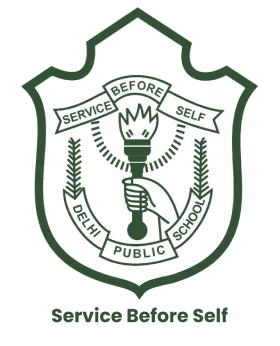Students have either loved or feared mathematics for a long time. Some people find math frightening and boring. Some have trouble with numbers and formulas, while others appreciate the logical thinking and problem-solving components. Math doesn’t have to be a hassle. Teachers can make maths engaging by using some enjoyable techniques. Below are some ways to increase pupils’ interest in arithmetic.
1. Gamify the learning experience
One of the best ways to help students take interest in math is through gamification. Turning mathematical concepts into games boosts enthusiasm in students.
- Board and card games: Traditional games like Sudoku, Uno, and Monopoly include mathematical concepts like addition, subtraction, and strategy.
- Online math games: Interactive and instructive games catered to various grade levels are available on internet sites.
- Competitions in the classroom: Setting up math-related activities, such as timed multiplication tasks create a fun, competitive atmosphere that involves every student present.
2. Incorporate real-life applications
Students are seen to ask, “When will I ever use this in real life?” Explaining the practical use of math in everyday situations can make lessons more meaningful to them.
- Shopping and budgeting: Give them tasks like creating a grocery list or calculating budget and sales discount on ingredients they buy.
- Baking and cooking: Students learn about fractions, proportions, and ratios via measuring items and modifying recipes.
- Sports and statistics: The application of mathematics in sports can be seen by examining player statistics or calculating batting averages.
3. Make use of interactive educational resources
- Students can understand mathematical topics when presented with actual items and manipulatives.
- Building blocks and LEGOs are used to teach ideas like spatial reasoning, symmetry, and patterns.
- Counting beads and an abacus are two ancient aids which boost the visual and interactive aspects of learning fundamental arithmetic.
- Students can use rulers, protractors, and scales to apply arithmetic to practical situations like weighing items or measuring angles.
4. Introduce storytelling and creative writing
Blending math with storytelling makes abstract concepts more relatable for students to grasp.
- Word problems and math stories: Developing narratives in which characters work through mathematical issues keeps kids interested.
- Math journals: Students get better knowledge when encouraged to write to resolve a problem or describe an idea in their own words.
- Math Comics & Illustrations: Learning becomes more fun when students are allowed to draw mathematical ideas with mathematical themes.
5. Make use of digital tools and technology
- Educational apps: Students can solve problems interactively with the use of various apps present on the internet’.
- Augmented reality (AR) and virtual reality (VR): Engagement is increased by using AR to superimpose mathematical ideas on the actual world or VR to investigate geometric forms in 3D.
- Online tutorials with YouTube: Complex subjects are simpler by watching math-related videos with engaging explanations and animations.
6. Promote collaborative education
- Peer teaching and group activities: Deeper knowledge and collaboration are encouraged by giving students group tasks or encouraging them to mentor one another.
- Clubs and contests for math: Math is made engaging by starting a club where students play games, solve riddles, and compete in Olympiads.
- Escape rooms and treasure hunts: Students are challenged to solve puzzles to uncover clues when math-based escape rooms or scavenger hunts are created.
7. Utilise music and art
- Creativity and math go hand in hand, and adding creative components enhances the learning experience.
- Geometry in Art: Using painting and drawing exercises to teach fractals, tessellations, and symmetry.
- Music & Rhythm: Teaching ideas like multiplication and sequencing through beats and melodic patterns.
- Students investigated mathematical ideas such as symmetry, fractions, and angles using origami and paper folding.
8. Add exercise and movement
- Create stations where children solve problems before running to the next station for math relay races.
- Jumping and counting games: Counting games such as jumping jacks assist in reinforcing math abilities.
- Math becomes less restrictive, conducted outdoors by engaging in activities such as counting natural objects or measuring playground surfaces.
9. Use role-playing and real-world simulations
- Math can become more engaging and meaningful when students are in a real-world scenario.
- Operating a mini store: To run transactions and funds, have the students play roles of cashiers, customers, and accountants.
- Challenges for engineers and architects: Getting students to apply mathematical principles in developing simple building designs or urban planning.
- Utilising simulated buying and selling exercises, stock market simulation educates senior students regarding investments, percentages, and basic economics.
10. Provide a positive reinforcement and growth mindset
- A supportive learning environment may assist students in overcoming their fear of mathematics.
- Praise effort over perfection: Praise students for effort and progress, not just perfection.
- Reward systems: Employ sticker charts, certificates, or small rewards to recognise achievement.
- Inspirational math stories: Telling success stories of mathematicians and problem-solvers to motivate students.
DPS Warangal, the top best day school in Warangal, Telangana, makes math fun and engaging by integrating games, technology, real-life applications, and collaborative learning. These interactive methods help students build confidence, appreciate mathematical concepts, and develop essential problem-solving skills for long-term success.


